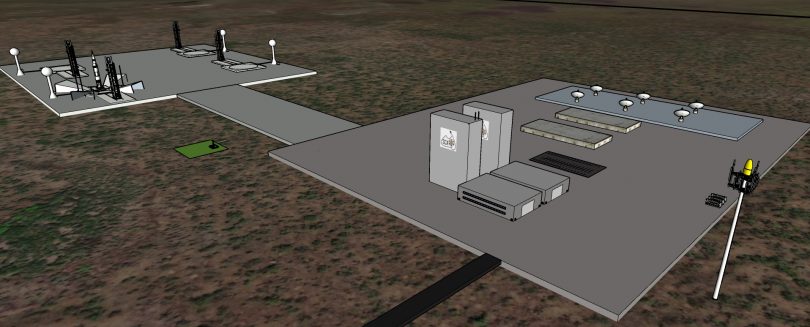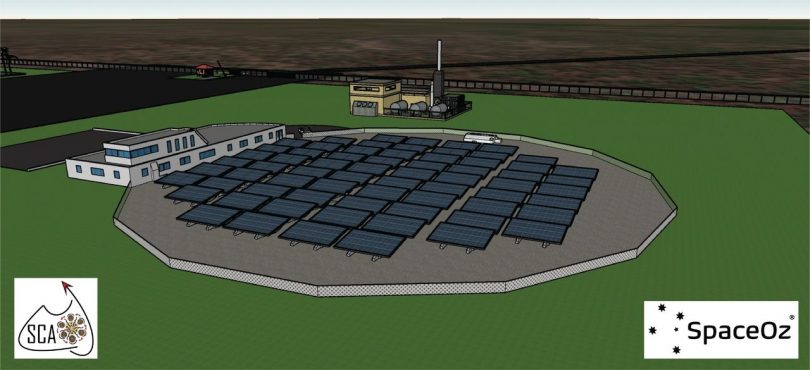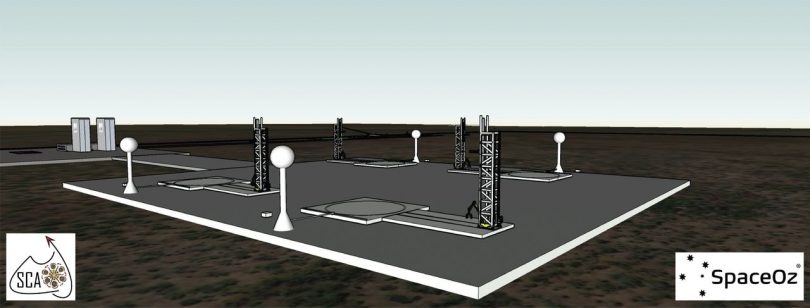
Space Centre Australia will include four launch staging pads and a mission control centre. Image: SpaceOz.
Space tourism could lift off from Australia’s first large-scale, multi-use spaceport within 18 months, according to Canberra visionary James Palmer.
Plans are well underway for the development of the $350 million Space Centre Australia facility at Weipa in Queensland, led by Mr Palmer’s ACT-based Palm Branch Group and its subsidiary, SpaceOz Pty Ltd.
The cutting-edge facility will offer lower cost access to space and give Australia a competitive advantage in the race to win commercial launches and private missions by the likes of Sir Richard Branson and Jeff Bezos.
Mr Palmer said negotiations are well underway with the Federal Government, Queensland Government, a host of investors and the traditional owners of the 22-square-kilometre site in remote northwest Queensland.
Designs are well advanced and building work is expected to commence early next year, with operations set to commence in the first phase of Space Centre Australia in the second half of 2022.
Worldwide investment in space companies hit a record $8.9 billion in 2020, and Mr Palmer said Space Centre Australia will bring financial benefits to the Australian economy.
He said the nation’s first large-scale, multi-use spaceport has been designed to be a “collaboration centre for the advancement of the Australian and international space industry sectors”.
“The bespoke facility will be similar to the space centre in America,” said Mr Palmer.
“However, we’re taking a hybrid approach, offering a one-stop shop that will be multi-tenanted by all sorts of different players. You could liken it to an international airport.”

Australia’s first large-scale, multi-use spaceport will be a collaboration centre for the advancement of the Australian and international space industry sectors. Image: SpaceOz.
The large site will accommodate small to large vertical launch vehicle systems, and will include a launch vehicle development and handling centre, four launch staging pads, and a mission control centre.
The space centre will also have accommodation and administration facilities, a data centre and broadband satellite communication facilities, and a security operations centre.
Mr Palmer said the space tourism sector is “ready to lift off” in Australia.
“There’s a massive amount of potential for space tourism here,” he said.
“It’s a really exciting time for the industry, and the new centre will move the country into a position where we can be more adventurous and ambitious with what we want to do.”
Mr Palmer and his team have been working with Trade and Investment Queensland and regional tourism organisations in northern Australia on a range of space tourism opportunities.
“Already we’ve been talking about phrases such as ‘Dive the reef on Monday, and go into orbit on Wednesday’,” he said.

The traditional owners of the 22-square-kilometre site in remote northwest Queensland have given the Space Centre Australia project the green light. Image: SpaceOz.
As well as tourism, Mr Palmer said the facility will be a catalyst for other space development and research projects, offering massive training opportunities.
“We’ll be working with schools and universities to offer education pathways such as traineeships and graduate opportunities,” he said. “We’re going to be proactive when it comes to training because we’re concerned that in 10 years’ time there will be a massive skills shortage in the space industry.”
When complete, it is estimated Space Centre Australia will provide 300 full-time roles as well as hundreds of contracting opportunities.
Based in Canberra, Palm Branch Group’s team comprises defence veterans, civilians and former emergency services personnel working on a range of defence and government programs, engineering and space programs, and land and marine environmental management initiatives.
Original Article published by Katrina Condie on The RiotACT.


What's Your Opinion?